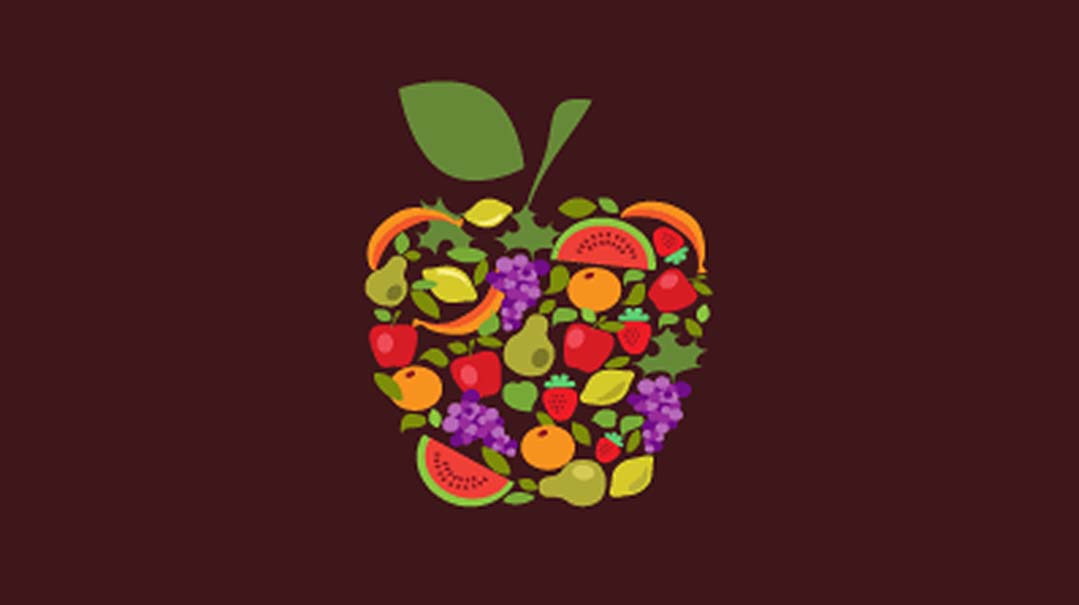The Organic Food Obsession

Organic food is often romanticized as the salvation for our food system, but it may not be as idealistic as it sounds

From her perch in the shopping cart, your daughter points to the Anjou pears and announces, “Mommy, I want.”
She never eats fruit, so you jump at the chance to buy a few, even though they’re a hefty $1.99 a pound. As you’re about to fill up a bag, your eye catches the bold-lettered “Organic” sign off to the side. At $2.49 a pound, organic Anjou pears are over 50 cents more than conventional pears. But this is your baby! Shouldn’t you buy her the best?
The real question is, are organic fruits, vegetables, and other foods really the best? From the hype created by marketing experts and even the media, it certainly seems that organic food is a good choice. But take a closer look and you’ll see that the issue is far more complex.
A Modern Phenomenon
Not too far back in history, food was a lot simpler. You could only get produce that was in season — and locally grown. Since food wasn’t mass-produced, it was more recognizable: bread, for instance, was made with flour, water, yeast, maybe some sugar or eggs. Fast-forward to today and your typical store-bought bread could contain more than a dozen ingredients, most of which are hard to pronounce. As for produce, you can buy Israeli-grown fruits and vegetables in the middle of America.
Today, food is called organic if it’s produced without synthetic pesticides or chemical fertilizers, irradiation, antibiotics, or genetically modified seeds. In simpler terms, organic food is produced with minimal chemicals and processing, using as few artificial add-ons as possible — which is exactly how all food was once produced.
But this is only one aspect of today’s organic movement. The farmers aim to keep soil healthy and fertile using natural methods, avoiding the need for toxic chemicals. An additional goal is to preserve biodiversity — that is, ensuring a varied number of plants and other organisms coexist in harmony. When that harmony is upset, it can throw the ecosystem off balance, disrupting many natural systems such as food chains or the safety of the water we drink.
Sustainability is another key objective. This means exactly what it sounds like — producing food in a way that maintains the planet and its resources so all of the earth’s inhabitants can continue to benefit from them for a long, long time. For example, an organic farm is likely to create compost from natural waste products like lawn clippings and food scraps and turn them into natural fertilizers, instead of tossing these wastes in a landfill and buying chemical fertilizers. This is a more natural way to enhance the growing process, and one less likely to harm the soil — thus sustaining the soil.
Although “organic” may bring to mind fruits and vegetables, any farmed product can be certified organic, including milk, poultry, and meat. In fact, organic foods represent a burgeoning industry. Sales of organic food and beverages in the US topped $26 billion in 2010, up more than 7 percent from 2009 — and from a mere $1 billion in 1990. Eleven percent of all fruits and vegetables sold in 2010 were organic.
The organic craze hasn’t been confined to food. There is increasing demand for organic products like shampoos and other toiletries, as well as cleaning agents. There are even clothing lines made from completely organic materials. Sales for all organic products in the US, including nonfood items, totaled $29 billion in 2010.
So convinced are people that organic is better that they’re willing to shell out an extra cost for these items. But the question remains: are these real or perceived benefits? Let’s take a look:
Nutritional Quality
Research hasn’t yet reached a consensus whether or not organic foods contain more nutrients than traditionally grown foods, but it has revealed they are certainly no worse off nutritionally. Some studies show organic foods are higher in vitamins, minerals, and phytochemicals like polyphenols, carotenoids, and flavonoids, as well as lower in pesticides and nitrates.
But a large review of 55 studies in the 2009 American Journal of Clinical Nutrition found no significant benefit of nutritional quality for organic foods. Although organic food was higher in phosphorus, for example, it’s not a nutrient that’s likely to make much of a difference in public health.
Taste Test
While the general population certainly thinks organic food is supposed to taste better, research shows that much of that improved taste is actually in the eater’s mind. One interesting study, published in the May 2007 Journal of Agricultural and Food Chemistry, compared organically grown grapefruits to conventionally grown, controlling for other aspects that affect quality like climate, soil type, and age of the plant. Turns out that the conventional grapefruit looked better, was not as tart, and also contained less naringin (the compound that makes grapefruit bitter). And, no surprise, the study participants liked it more. The organic fruit wasn’t a complete wash, though — it got higher marks for having a thinner peel, more vitamin C and sugar, and fewer nitrates.
That same year, researchers from Kansas State University asked 100 people to compare organic and conventional produce (tomatoes, onions, cucumbers, lettuce, spinach, and other greens) that were grown side by side. The results: the participants didn’t like the organic versions more or give them higher ratings for flavor. In fact, they thought conventional tomatoes had a better flavor than the organic ones.
Is It Really Green?
Organic food is often romanticized as the salvation for our food system, but it may not be as idealistic as it sounds. The term “organic” is regulated by the government — for example, specific pesticides may not be used, specific farming practices cannot be followed. But there are no requirements for the sustainability of organic food products, even though this was part of the original intention of the 1990 Organic Foods Production Act.
A common debate troubling people who are interested in sustainable agriculture is whether it’s preferable to purchase organic or local produce. The irony is that local produce may be more sustainable. Organic food may use better farming techniques, but when you consider the pollution from trucking produce across the country (or shipping it from another country), the gain is questionable. A small farmer who uses wholesome farming methods, but relies on some conventional pesticides and sells his crops at a local farmer’s market, leaves a smaller impact on the environment.
In addition, organic farming began as a mom-and-pop type of movement — small farms selling locally. Now that organic food is a major industry, large companies are entering the market by producing “organic only” lines. For them, profitability is the priority. So while these food manufacturers may qualify as “organic” by following the pesticide-related rules, they may employ other nonsustainable practices to improve their bottom line. For instance, they may only plant one type of crop (rather than a variety), a practice that may harm soil in the long term.
The volumes produced by organic farms today also tax the natural resources of their local areas. According to the New York Times, the popularity of organic tomatoes from Mexico’s Baja Peninsula is already straining the water resources in the region.
There’s no good way for the consumer to know if an organic product was truly grown sustainably. And even if it was, the depressing reality is that small farms that are both organic and sustainable are not truly sustainable, according to reporter Kristin Underwood, who writes about sustainability and the green movement for Treehugger.com. She estimates that for this type of farming to support all the people on the earth, we’d need at least twice as much farmland, if not more — which would mean cutting down more trees, in itself a nonsustainable practice.
A Question of Safety
Perhaps the clearest advantage of organic food is its minimal use of synthetic pesticides. While pesticides are designed to kill insects, weeds, fungi, and rodents, there is evidence that they may unintentionally harm humans as well. According to research, exposure to pesticides can be detrimental to a host of organ systems — the heart, lungs, nervous system, and skin, to name a few.
The most recognized connection, however, is cancer, with suggested links to all types of cancer — from blood cancers like leukemia to cancers of the pancreas, liver, and brain. Some research suggests that childhood cancers are related to the pesticide exposure of their parents. A variety of pesticides, including organochlorines, organophosphates, carbamates, and pyrethroids, are classified as either carcinogens (cancer-causing substances) or potential carcinogens, both according to the US Environmental Protection Agency (EPA) and the World Health Organization’s International Agency for Research on Cancer. They may also suppress the immune system, which impacts cancer risk as well. It is for all these reasons that Indian researchers Jasmine George and Yogeshwer Shukla wrote in a recent Journal of Proteomics article, “Pesticides pose a serious threat to public health, particularly to infants and children.”
Pesticides don’t affect everyone exactly the same way. Each person’s body will break down chemicals at different rates, so some may be more (or less) affected by the same exposure as others. In addition, farm workers who regularly handle pesticides are at higher risk than the consumer; one study found abnormal brain function in farm workers, while another showed changes in the way their liver enzymes behaved.
Infants and children are thought to be more affected by pesticide exposure. And they (or anyone really) can be exposed to pesticides even without eating foods treated by pesticides — exposure can come from lawn-care products, flea treatments for pets, putting random objects in their mouths, even from mother’s milk!
The Real Question
Here’s the crux of the organic issue. No one disputes the fact that large amounts of chemicals like pesticides may be harmful to people’s health. The question the debate centers on is this: how much is too much?
Organic food advocates would say any amount is too much. But what they may not realize is that certified organic foods may contain pesticide residue. Organic farming can use pesticides that are approved by the National Organic Standards Board. True, they’re generally naturally occurring, but some synthetic ones are permitted — if they won’t contaminate soil or water, or when organic pest control methods are not sufficient to eliminate insects and other pests.
Perhaps more importantly, organic crops still contain pesticide residue even if they weren’t treated with them — from neighboring nonorganic crops, from contaminated water used for watering, or from soil that was previously treated, even years before. That’s actually why the National Organic Program will allow the use of the word “organic” as long as pesticide levels are less than 5 percent of the EPA tolerance levels.
Conventional produce is still about three times as likely to be contaminated with pesticide residue as organic food, and it’s quite rare to find more than one type of pesticide in organic produce. Dr. Carl Winter of the University of California–Davis points out, however, that even conventional produce that has pesticides is closely monitored to ensure levels stay at safe amounts.
Contrary to popular belief, conventional crops can’t just be sprayed liberally with any pesticide desired. Pesticide use is highly regulated by the Food Quality Protection Act, passed in 1996. The EPA determines when the risk of developing cancer from long-term intake of a certain pesticide at a certain level would be one in a million or less. Extreme precaution is taken to ensure tolerances are set more strictly when children and infants would be at risk.
In setting regulations, the EPA also considers different pesticides with similar actions that may have a cumulative effect. Because of these research-based parameters, Dr. Winter asserts that people are exposed to very small risk by eating conventional fruits and vegetables. He questions whether there’s a tangible benefit to cutting that small risk even further by choosing solely organic produce.
Even though the US sets upper limits for pesticide allowances within its borders, it has no jurisdiction over pesticides used on foods grown in other countries and imported to the US. It is therefore a commonly held belief that imported crops should be avoided because they often have pesticide levels that exceed US limits. According to one research estimate, over 120,000 kilograms of pesticides above US limits could be brought in through imported foods.
However, recent data compiled by Dr. Winter debunks this theory by demonstrating lower contamination levels among imported crops. Dr. Winter found that, when sampled for pesticide residue, imported crops are more likely to have clean results (i.e., no pesticides). Between 2003 and 2008, he reports, approximately 60 to 70 percent of imported fruits did not have any trace of pesticides, while the rates for US crops were lower, between 42 and 61 percent. Dr. Winter also cites another recent study, published in 2009, that compared domestic and imported fruits and vegetables on 15 different pesticide residues. Surprisingly, for 11 of the pesticides, domestic produce actually contained higher levels than imported, and the highest overall levels were also found in domestic fruits and vegetables.
The Bottom Line
There may indeed be benefits to choosing organic foods, but today’s research simply hasn’t proven them yet. We need more high-quality, systematic studies to know for certain.
What scientists have come to a consensus on, however, is that there are tangible health benefits to eating adequate fruits and vegetables and other healthful agricultural products. According to Dr. Winter and others, these benefits outweigh the small risk from allowable pesticide residue found on produce. You can also cut your exposure to pesticides by washing and peeling your fruits and vegetables. (Keep in mind, though, that some pesticides do get absorbed into the produce.)
Ultimately, the decision to purchase organic food is a personal one — based on individually held beliefs, as well as on health and financial concerns. After all, it’s your daughter who’ll be eating that pear.
Label Lingo
Now that you’ve mastered the term “organic,” here’s a tutorial on other terms you may see on food labels for meat, poultry, or eggs:
- Free-range: The animals or birds were given access to the outdoors. (This doesn’t necessarily mean that the cow, for instance, ever left the barn. It just means that in the barn, there might be a swinging door permanently open to a field outside.)
- Cage-free: The animals or birds weren’t kept in cages; rather, they had freedom to move around their coop or other enclosure.
- Natural: The end product (i.e., the eggs, poultry, or meat) have undergone very little processing and have no added artificial ingredients.
- Grass-fed: The animals ate mostly grass (as opposed to grain or corn feed).
Produce and Pesticides
Every year, the Environmental Working Group (EWG), a nonprofit public health organization, publishes the “Dirty Dozen,” a list of the 12 fruits and vegetables with the most pesticide residues:
- Apples
- Celery
- Strawberries
- Peaches
- Spinach
- Imported nectarines
- Imported grapes
- Sweet bell peppers
- Potatoes
- Blueberries
- Lettuce
- Kale/collard greens
For these items, the EWG recommends going organic. If that’s not an option, the organization still advises people to avoid the conventional versions and instead seek out other produce.
Dr. Carl Winter of the University of California–Davis, however, maintains that EWG only considers the presence of pesticides when creating their list, instead of taking into account how much a consumer would be exposed to if they ate the foods. Along with his student Josh Katz, Dr. Winter estimated the potential exposure of the consumer to 10 of the most common pesticides for each of the foods on the Dirty Dozen list. They found pesticide levels were well below the tolerance levels set by the EPA and therefore considered them safe.
Checking for Creepy Crawlers
If you’re buying pesticide-free (or “pesticide-lite”) organic food, you may have to spend more time scouring for bugs. Rabbis at the Chicago Rabbinical Council report that they’ve found higher rates of infestation among organic produce that has been treated with fewer or no pesticides. Although there are certainly exceptions, this has been their general experience.
(Originally featured in Family First, Issue 290)
Oops! We could not locate your form.






